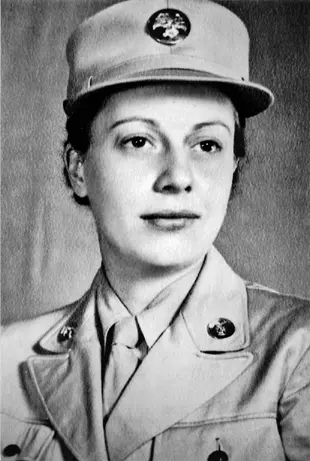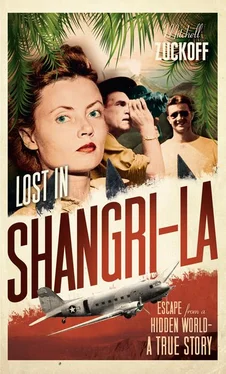Inhabited by humans for more than forty thousand years, New Guinea passed the millennia largely ignored by the rest of the world. Lookouts on European ships caught sight of the island early in the sixteenth century. In 1545, the Spanish explorer Yñigo Ortiz de Retez named the island Neuva Guinea after an African country 16,000 kilometres away, because the natives he saw on the coast had black skin. For another two centuries, New Guinea was left mostly to itself, though trappers stopped by to collect the brilliant plumes of its birds of paradise to make hats for fashionable Sri Lankan potentates. In the eighteenth century, the island became a regular landing spot for French and British explorers. Captain Cook visited in 1770. Scientists followed, and the island drew a steady stream of field researchers from around the globe searching for discoveries in zoology, botany and geography.
In the nineteenth century, New Guinea caught the eye of traders seeking valuable raw materials. No precious minerals or metals were easily accessible, but the rising value of coconut oil made it worthwhile to plant the flag and climb the palm trees along the coastline. European powers divided the island roughly in half, and the eastern section was cut in half again. Over the years, claims of sovereignty were made by Spain, Germany, the Netherlands, and Great Britain. Nevertheless, even well-educated Westerners had a hard time finding it on a map.
After the First World War, New Guinea’s eastern half was controlled by Britain and Australia. The island’s western half was controlled by the Netherlands – and was henceforth known as Dutch New Guinea – with Hollandia as its capital. Unprecedented attention was drawn to the island as the Second World War unfolded, because of its central location in the Pacific theatre.
Japan invaded in 1942, planning to use New Guinea to launch attacks on Australia, just over 160 kilometres away across the Torres Straits. In April 1944, US troops executed a daring strike called ‘Operation Reckless’ that scattered the Japanese troops and won Hollandia for the Allies. The Americans turned it into an important base of their own, and General Douglas MacArthur, Supreme Commander of Allied Forces in the Southwest Pacific, built his headquarters there before moving on to the Philippines.
____
In New Guinea as elsewhere, Margaret Hastings and other WACs filled strictly non-combat roles, as expressed by their slogan, ‘Free a Man to Fight’. An earlier motto, ‘Release a Man for Combat’, was scratched because it was feared it might feed suspicions among the WACs’ detractors that their secret purpose was to provide sexual distractions for soldiers in the field. MacArthur was not among those critics. He liked to say the WACs were ‘my best soldiers’ because they worked harder and complained less than male troops. Eventually, more than one hundred and fifty thousand women served as WACs during World War II, making them the first women other than nurses to join the US Army.
Margaret arrived in Hollandia eight months after the success of Operation Reckless. By then, little of the war’s bloody drama was playing out in that corner of the Pacific. Thousands of Japanese troops remained armed and in hiding on the island, but few were believed to be in the immediate vicinity of Hollandia. Nevertheless, sentries patrolled the sea of tents and one-storey buildings on the Army base. WACs were routinely escorted under armed guard, and women’s tents were ringed by barbed wire. One WAC explained that the highest-ranking woman in her tent was given a sidearm to keep under her pillow, with instructions to kill her tent mates then herself if Japanese troops attacked. New Guinea natives also raised concerns, though the ones nearest Hollandia had grown so comfortable with the Americans they would call out, ‘Hey Joe – hubba, hubba – buy War Bonds.’ Australian soldiers who had received help from the natives during battles with the Japanese nicknamed them ‘Fuzzy Wuzzy Angels’.
Some WACs thought the safety precautions’ real aim wasn’t to protect them from enemies or natives, but from more than one hundred thousand US soldiers, sailors and airmen in and around Hollandia. Some of those fighting boys and men hadn’t seen a Western woman in months.
Almost immediately upon her arrival in Hollandia, Margaret became a focus of lovelorn soldiers’ attentions. ‘I suppose you have heard about blanket parties,’ she wrote to a friend in Owego in February 1945. ‘I know I did and was properly shocked. They are quite the thing in New Guinea. However, they are not as bad as they seem and anyway, nothing can be done on a blanket that can’t be done in the back seat of a car.
‘You see, we have no easy chairs and Jeeps are not too easy to sit in. So you just take your beer, or at the end of the month when the beer is all gone, your canteen of water and put it in a Jeep and ride all around until you find some nice place to relax. The nights are lovely over here and it’s nice to lay under the stars and drink beer and talk, or perhaps go for a swim … With the surplus of men over here, you can’t help but find some nice ones. I have had no difficulty along that line at all.’
Far from home, Margaret indulged her adventurous impulses. ‘One night,’ she wrote, ‘six of us went out in a Jeep without any top and drove all over the island. We travelled on roads where the bridges had been washed away, drove through water, up banks, and almost tipped over about ten times.’ The letter didn’t give away military secrets, only personal ones, so it slipped untouched past the base censors.
Margaret’s great friend was a pretty brunette sergeant named Laura Besley. The only child of a retired oil driller and a homemaker, Laura hailed from a small town in Pennsylvania, 144 kilometres from Pittsburgh. She had spent a year in college before enlisting in the WACs in August 1942.
Laura was taller and more full-figured than Margaret, but otherwise the two WACs were much alike. Laura was thirty-one, single, with a reputation among her family for being a ‘sassy’ young woman who did as she pleased.
When they were not working, blanketing or joyriding, Margaret, Laura and the other WACs made their quarters as plush as possible. ‘It is really quite homelike, and I am lucky enough to be in with five exceptionally nice girls,’ Margaret wrote another friend at home. They furnished their 3.5-metre-square canvas home with small dressing tables made from boxes and burlap. They sat on chairs donated by supply officers who hoped the gifts would translate into dates. A small rug covered the concrete pad that was the floor, mosquito netting dangled over their cots, and silky blue parachute cloth hung as decoration from the tent ceiling.

Sergeant Laura Besley of the Women’s Army Corps.
A single bulb illuminated the tent, but a kind lieutenant named John McCollom who worked with Margaret’s boss gave Margaret a double electric socket. The coveted device allowed her to enjoy the luxury of light while she ironed her uniforms at night. Quiet and unassuming, John McCollom was one of a pair of identical twins from Missouri who served together in Hollandia. He was single and could not help but notice Margaret’s good looks, yet he did not try to convert the gift into the promise of a date. His good manners made Margaret appreciate it all the more.
The wildlife of New Guinea was not so unassuming. Rats, lizards, and hairy spiders the size of coffee saucers marched boldly into the WACs’ tents, and mosquitoes feasted on any stray arm or leg that slipped out from under the cots’ protective netting. Even the precautions had vivid side effects. Bitter-tasting Atabrine tablets warded off malaria, but the pills brought on headaches and vomiting, and they turned soldiers’ and WACs’ skin a sickly shade of yellow.
Читать дальше













